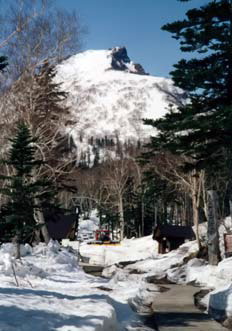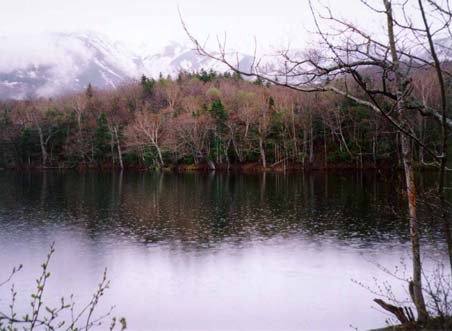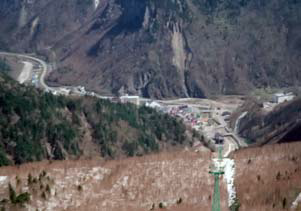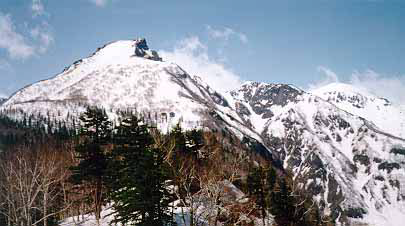Kurodake in japan
Kurodake

• Hiking time: 4 hours without snow
• Estimated hiking distance: 3.8 miles
• Elevation gain: 1330 feet
• Topo Map: Geospatial Authority of Japan Online Maps
• Difficulties: Possible snow fields
• Special equipment: Crampons and ice axe
• Permit: Sign in at trailhead

Characteristics
Most hikers have an unwritten list of mountains that they would like to
climb. And Mount Fuji is on many of those lists because of the hallowed place
it occupies in the Japanese culture and mythology. The Japanese regard the
symmetry of its nearly perfect conical shape as implying a sacred origin and the
number of paintings, view points and photographs that celebrate views of Fuji
are numberless. Yet this same monotonous symmetry makes the hike up Mount
Fuji somewhat boring. The Japanese have a saying that everyone should climb
Fuji once but only a fool would climb it twice. What makes the hike even less
enjoyable is that, for the few summer months when the snow is gone, there is
an almost unbroken queue of people trudging up to the summit.

Yet, despite all this, when I went to Japan for a couple of months in the
spring of 1993, one of my private objectives was to get to the top of Fuji-san.
Shima of Tohuku University, he replied that this would not be possible because
“Mt. Fuji is closed”. It seems that the Japanese, who love rules and usually
obey them without question, had long ago established “a season” for climbing
Fuji that begins on July 1. I, being singularly unimpressed by arbitrary rules,
still thought I might be able to sneak away some weekend and attempt the
climb. It seems, however, that my reputation had preceded me for it became
clear that Shima and my other hosts had arranged a schedule that did not have
the two successive free days that would be necessary for the attempt. And so
my ambitions were thwarted. Of course, it must also be added that during
the month of April when I would be within striking distance of the mountain,
the depth of snow and the severity of the weather make it foolish for anyone to
attempt the climb and particularly foolhardy to try to do it alone. Nevertheless,
I felt some sense of frustration especially since I had come well-equipped for the
snow. Early the previous winter I had purchased crampons (spiked frames you
strap to your boots) and had practiced snow climbing with them on the slopes
of Mount Baldy in California.

During the first month and a half of my stay in Japan I did have the opportunity
to climb a number of mountains in central and southern Japan. Almost
always some fellow academic accompanied me. Thus I climbed To-no-dake
(4892ft) in Tanzawa Quasi-National Park with my friend, Yoichiro Matsumoto,
of Tokyo University. And with another friend, Yoshi Tsujimoto of Osaka University,
I climbed two very interesting and very different mountains. One day
during “Golden Week” we drove to the village of Dorogawa in the wilderness
area south of Osaka and climbed the sacred mountain of Sanjo-go-take (5640ft)
also commonly known as Omine-san. Later, during a visit to the beautiful island
of Yakushima south of Kyushu, we negotiated our way past a large group
of Japanese macaques and through fantastic semi-tropical forest and meadows
with crystal streams on our way to the magnificent 6007ft summit known as
Kuromi-dake. These climbs were very enjoyable and interesting but not exceptionally
challenging. I still harbored a desire to climb a really challenging
mountain, to escape from my chaperones and, perhaps, to demonstrate that
I could have climbed Fuji anyway if I had been given a chance. Call it Irish
stubbornness.
